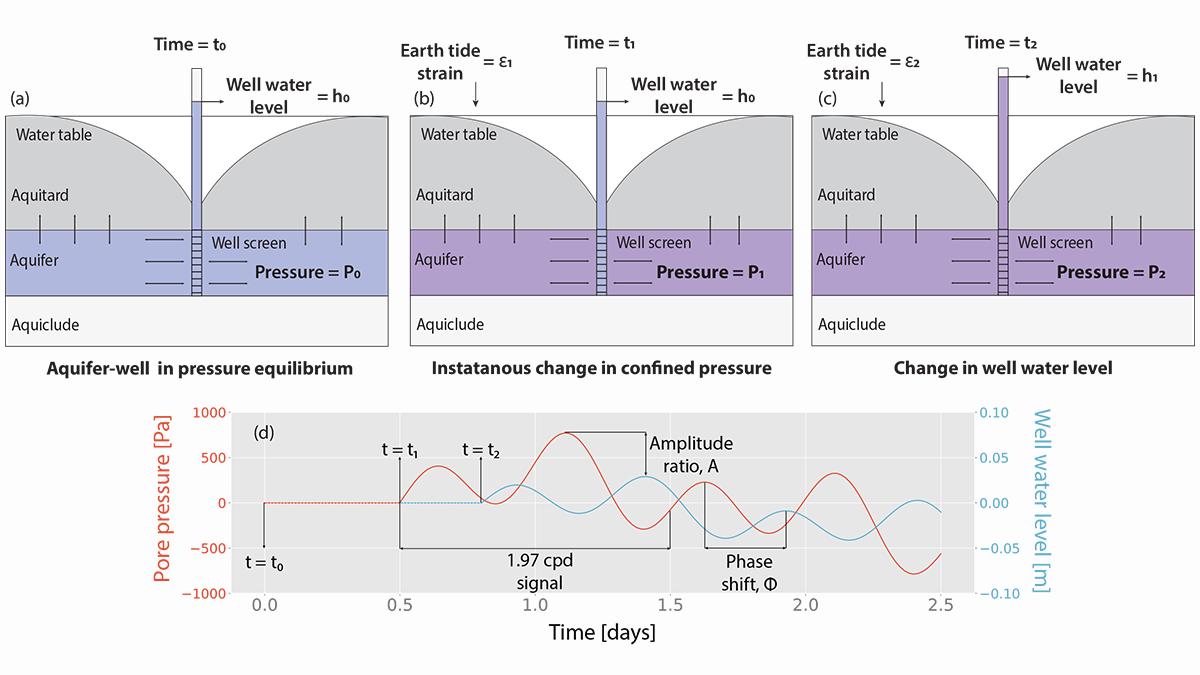Editors’ Highlights are summaries of recent papers by AGU’s journal editors.
Source: Journal of Geophysical Research: Solid Earth
Tidal displacements of the solid Earth’s crust are caused by the gravitational forces of celestial bodies moving in relation to the Earth. The associated harmonic fluctuations of water well levels, when monitored for a long enough time, can be used to estimate both hydraulic and mechanical properties of the subsurface.
Bastias Espejo et al. [2022] developed a numerical algorithm based on coupled physics to model the hydro-mechanical response of fluid-saturated porous media to strain variations produced by Earth tides. In the numerical solution, a strain change and the associated elastic deformation of the porous solid matrix cause a change in pore fluid pressure, which results in fluid pressure gradients between the subsurface and an observation well. These gradients cause fluid movement in or out of the well.
The numerical approach can account for conditions that are more realistic than those considered in analytical solutions. Analytical solutions are based on strongly simplifying assumptions, for example, they might consider only radial flow, only confined and undrained conditions, unconsolidated aquifer, and no gravity. Furthermore, currently available analytical solutions do not account for the elastic deformation of the porous medium, while the in numerical approach developed by the authors, such elastic deformation of the porous medium is physically coupled to the fluid movement.
The researchers used numerical simulations to assess the effects of simplifying assumptions upon which the analytical solutions are built. The applicability of analytical solutions was established within the limits of appropriate conditions and specific ranges of aquifer properties, but out of these limits significant differences were observed between numerical and analytical results.
Citation: Bastias Espejo, J. M., Rau, G. C., & Blum, P. (2022). Groundwater responses to Earth tides: Evaluation of analytical solutions using numerical simulation. Journal of Geophysical Research: Solid Earth, 127, e2022JB024771. https://doi.org/10.1029/2022JB024771
—Beatriz Quintal, Associated Editor, Journal of Geophysical Research: Solid Earth

